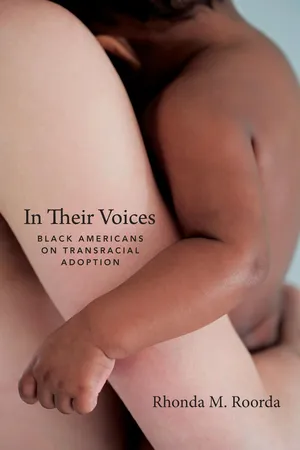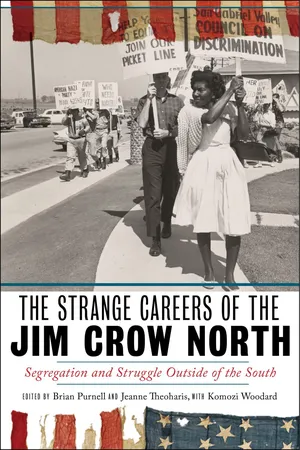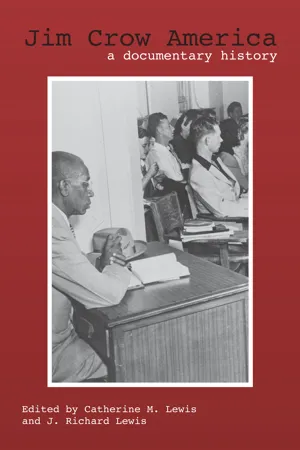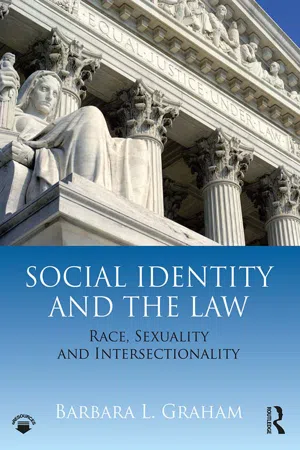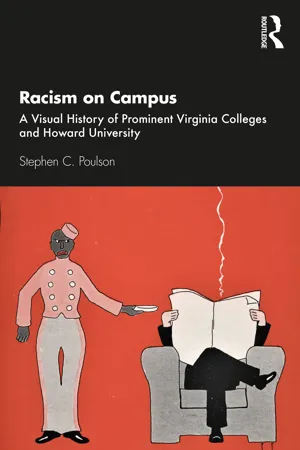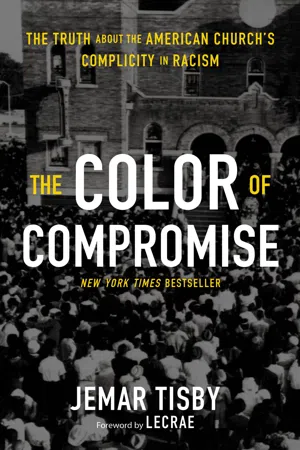History
Jim Crow Era
The Jim Crow Era refers to the period of legalized racial segregation and discrimination in the United States, particularly in the Southern states, from the late 19th century to the mid-20th century. Named after a minstrel show character, Jim Crow laws enforced racial segregation in public facilities, schools, and transportation, and perpetuated systemic racism and inequality.
Written by Perlego with AI-assistance
Related key terms
7 Key excerpts on "Jim Crow Era"
- eBook - ePub
In Their Voices
Black Americans on Transracial Adoption
- Rhonda Roorda(Author)
- 2015(Publication Date)
- Columbia University Press(Publisher)
The Army was in the South to enforce the Fourteenth and Fifteen Amendments [civil rights and voting rights, respectively], and it became increasingly clear that without its presence, the white South would regionally nullify those amendments through terrorism. But the use of federal troops to confront the white militias was deeply unpopular, including in the North. . . . The country had never been entirely for full rights for African Americans in the first place, and it wanted to put the Civil War and its legacy behind it.The Ku Klux Klan, which began in the immediate aftermath of the war and was suppressed by federal troops, soon morphed into an archipelago of secret organizations all over the South that were more explicitly devoted to political terror. . . . In the aggregate, many more black Americans died from white terrorist activities during Reconstruction than from many decades of lynchings. Their effect was to nullify, through violence, the Fifteenth Amendment, by turning black political activity and voting into something that required taking one’s life into one’s hands.Isabel Wilkerson picks up the story: “Around the turn of the twentieth century . . . southern state legislatures began devising with inventiveness and precision laws that would regulate every aspect of black people’s lives, solidify the southern caste system, and prohibit even the most casual and incidental contact between the races. They would come to be called Jim Crow laws” (2010, p. 40). The Jim Crow Era lasted almost one hundred years.1 By 1915 all southern states had some form of Jim Crow laws. For example, blacks were prohibited from eating in the same restaurants, drinking out of the same drinking fountains, entering the same restrooms, going to the same schools, or watching movies in the same theaters as whites. Common signage at the time warned: “Whites Only”; “Restrooms for Colored”; “No Dogs, Negroes or Mexicans”; “Colored Waiting Room”; and “Staff and Negroes Use Back Entrance” (Householder, 2012).Punishment for blacks who defied Jim Crow laws (and even for sympathetic whites) was severe. For infractions like attempting to register to vote, stealing a cow, talking back to a white person, or fighting for justice, blacks could be lynched by white mobs that didn’t even bother to hold a sham trial (NAACP, 2000). And in the case of serious felonies, many innocent people were hanged. - eBook - ePub
The Strange Careers of the Jim Crow North
Segregation and Struggle outside of the South
- Komozi Woodard, Jeanne Theoharis, Brian Purnell(Authors)
- 2019(Publication Date)
- NYU Press(Publisher)
8Jim Crow began in the North, not the South. Long before the Civil War, northern states like New York, Massachusetts, Michigan, New Jersey, Ohio, and Pennsylvania had legal codes that promoted black people’s racial segregation and political disenfranchisement. While these northern Jim Crow laws predated the South’s, these racial systems never dominated or defined the region in a uniform way. Throughout the nineteenth century, black and white abolitionists and free black activists challenged the North’s Jim Crow practices, won some victories, waged war against slavery in the South and the North, and even changed some of the North’s racist laws in housing, voting, education, and marriage. Nonetheless, northerners wove Jim Crow racism into the fabric of their social, political, and economic life in ways that shaped the history of the region, and the entire nation. Jim Crow, outside of the South, coexisted, even thrived, alongside efforts to reform its worst manifestations in social and political life. This characteristic distinguished it from its southern version. A commonplace saying captured the two Jim Crows perfectly: in the South, black people could get close to white people, so long as they did not become too “uppity” by advocating for their social, political, or economic equality with whites. In the North, black people could get as “uppity” as they want—they could run successful businesses, consume luxury goods, and sit next to white people on the bus—so long as they did not try to get too close to whites, as their neighbors, sexual partners, classmates, or union brothers. This aphorism’s wisdom recognizes that Jim Crow, whether in the North or in the South, demanded that black people remain in their “place.” The essays in this volume reveal this history of northern systems of racial segregation, as well as the resistance people mounted against them.9 - eBook - ePub
Recognizing Race and Ethnicity, Student Economy Edition
Power, Privilege, and Inequality
- Kathleen Fitzgerald(Author)
- 2019(Publication Date)
- Routledge(Publisher)
Identify three reasons African Americans would desire to leave the South during the Jim Crow Era. To this day, most African Americans still live in the South. Can you identify two reasons that many blacks might have stayed in the South during the Jim Crow Era, rather than participating in the rural to urban migration?Nativism and the Era of Exclusion
The immediate post-Civil War period witnessed gains made by African Americans, only to have these reversed as Jim Crow set in. The late 1800s also witnessed progress and backlash for other racial/ethnic groups. The mid-to-late 1800s was one of the most significant eras of immigration in United States history. Defining who qualified as an "American" became a major focus of the era and African Americans and Native Americans were not yet included in that identity. Initially, tens of thousands of immigrants, mostly European Catholics, Eastern European Jews, Asians, and Middle Easterners, also found themselves defined out of this elusive category "American." A spread of nativism , a surge in anti-immigrant beliefs and policies, occurred. Nativists saw themselves as the true Americans because they were native born and expressed anti-Catholic hostilities and xenophobia , the fear and contempt of strangers. Thus, while this historical era is one of terror and oppression for recently emancipated African Americans, it was also an extremely repressive era for many immigrant groups. Nativism resulted in the first immigration restrictions in the United States, such as the Chinese Exclusion Act.White racial supremacy is a global phenomenon linked to global capitalism, thus one can see similar immigration legislation throughout the world. For instance, similar immigration restrictions were enacted in Australia during the same period and were, tellingly, referred to as the "white Australia policies" (see Box 5.3 Global Perspectives). Global white supremacy - eBook - ePub
Jim Crow America
A Documentary History
- Catherine M. Lewis, J. Richard Lewis, Catherine M. Lewis, J. Richard Lewis(Authors)
- 2009(Publication Date)
- University of Arkansas Press(Publisher)
CHAPTER 1
Inventing Jim Crow
The documents in this first section examine the origins of the term “Jim Crow,” the legal means by which slavery was ended in the United States, and early attempts to formalize and justify segregation throughout the nation after the Civil War.DOCUMENT 1: Song lyrics, “Jump Jim Crow,” by Thomas Dartmouth (T. D.) “Daddy” Rice, 1828.“Daddy Rice,” a nineteenth-century blackface performer, introduced the song and dance “Jump Jim Crow” in 1828 in a minstrel show. The first printed version of the song was published by E. Riley in the early 1830s. Supposedly inspired by an African man from Cincinnati, Jim Crow became a popular American trickster figure. Several terms in the song need clarification: (1) “Tuckyhoe” might refer to the plantation where Thomas Jefferson spent his childhood; (2) “Pagannini” is a reference to Italian violinist, guitarist, and composer Niccolò Paganini (1782–1840); (3) “Pakenham” likely refers to Major General Edward Pakenham, who commanded the British forces that invaded New Orleans during the War of 1812; (4) “Wiper” refers to viper; (5) hoecake is unleavened cornmeal batter that is cooked on a hoe in an open fire. The song below includes eleven of the forty-four verses. The full version is available in W. T. Lhamon Jr.’s Jump Jim Crow: Lost Plays, Lyrics, and Street Prose of the First Atlantic Popular Culture - eBook - ePub
Social Identity and the Law
Race, Sexuality and Intersectionality
- Barbara L. Graham(Author)
- 2018(Publication Date)
- Routledge(Publisher)
Civil Rights Cases is that Congress did not enact another major civil rights law until 89 years later, the Civil Rights Act of 1964, under its power to regulate interstate commerce. After the death of Chief Justice Waite, there was considerable personnel change on the Supreme Court. From the beginning of the Fuller Court in 1888 until the end of the Taft Court (1930), nine presidents appointed twenty-five Justices to the Supreme Court, including three Chief Justices. Despite the remarkable turnover during this forty-two year period, the Supreme Court’s jurisprudence in the area of racial equality was steadfastly entrenched in a conservative direction. By the 1890s, ideas of black intellectual, biological and cultural inferiority dominated popular, scientific and jurisprudential thought. The Court’s decisions during this era espoused a jurisprudence grounded in state prerogatives and laissez-faire ideology.American-Style Apartheid
The racial caste system that operated primarily but not exclusively in Southern and border states during the Reconstruction period until the mid-1950s is commonly referred to as the era of Jim Crow segregation. Southern states began passing Jim Crow laws around 1890 and passed a second wave of laws a decade later. Laws requiring separation of the races were comparable to the Black Codes adopted in 1865 after the ratification of the Thirteenth Amendment. In both contexts, the intent of the segregation laws was to force people of color into a continued state of subjugation and quasi-slavery status.AMERICAN-STYLE APARTHEID BOX 2.2Jim Crow in the American South“The extremes to which caste penalties and separation were carried in parts of the South could hardly find a counterpart short of the latitudes of India and South Africa. In 1909 Mobile passed a curfew law applying exclusively to Negroes and requiring them to be off the streets by 10 p.m. The Oklahoma legislature in 1915 authorized its Corporation Commission to require telephone companies “to maintain separate booths for white and colored patrons.” North Carolina and Florida required that textbooks used by the public-school children of one race be kept separate from those used by the other, and the Florida law specified separation even while the books were in storage. South Carolina for a time segregated a third caste by establishing separate schools for mulatto as well as for white and Negro children. A New Orleans ordinance segregated white and Negro prostitutes in separate districts. Ray Stannard Baker found Jim Crow Bibles for Negro witnesses in Atlanta courts and Jim Crow elevators for Negro passengers in Atlanta buildings.” - eBook - ePub
Racism on Campus
A Visual History of Prominent Virginia Colleges and Howard University
- Stephen C. Poulson(Author)
- 2021(Publication Date)
- Routledge(Publisher)
2Jim Crow Racism on Campus
Post–Civil War Reconstruction to World War II (1890–1942)
DOI: 10.4324/9781003134480-2Historians have often argued that the low point of race relations in the United States occurred directly following the end of post–Civil War Reconstruction (1865–1878) (see Logan [1965] 1997). During this time, so-called Jim Crow laws became the popular shorthand reference for state and local laws in the South that separated Black and White people in public and private life. These laws became institutionalized following the Plessy v. Ferguson Supreme Court decision in 1896, which ruled that the separation of Black and White public facilities was legal if they were “equal” in quality. Shortly after, the Virginia state government, using the logic of Plessy v. Ferguson, began to pass laws designed to deny Black Virginians their basic rights, particularly as related to the acquisition of property and voting. During this period the state also institutionalized a written bar exam for admittance to the legal profession. The Virginia bar exam effectively created the first professional law schools, and soon those at the University of Virginia (UVA), Washington and Lee (W&L) and the University of Richmond (UR) became among the most prominent. Practically, nearly all Black men and women were barred from practicing law in Virginia because they could not attain a law degree at any Virginia universities. The exceptions were two Black men, trained at Howard University, who passed the Virginia bar exam (Matthew 2019 ).The previous history helps inform the meaning of many pictures presented in this chapter, but is also useful in understanding the myriad ways in which prominent colleges—particularly those with law schools—became directly culpable in creating and maintaining the laws that were formally established during this period. Here, it is not surprising that Charlottesville, Virginia, home to the University of Virginia, quickly enacted pernicious local laws that forcefully segregated the races within the city. These laws limited where Blacks could live, own property, run a business and attend school. For example, the last inter-racial neighborhoods in the city were outlawed by the Charlottesville City Council in 1912 when it unanimously adopted an ordinance: “To Secure for White and Colored People a Separate Location of Residence for Each Race” (Matthew 2019 - eBook - ePub
- Jemar Tisby(Author)
- 2019(Publication Date)
- Zondervan(Publisher)
CHAPTER 6RECONSTRUCTING WHITE SUPREMACY IN THE Jim Crow EraAfter thelong night of enslavement and the chaos of the Civil War, African Americans turned their faces toward the warm dawn of freedom. For a brief, breathless moment it seemed as if the nation might finally live up to its guarantees of life, liberty, and the pursuit of happiness. But no sooner had the Confederates signaled surrender than the systematic machinations of white supremacists began to dismantle the hard-won opportunities of black Americans.From 1865 to 1877, black citizens embraced their new roles as emancipated citizens. They ran for political office, opened businesses, started schools, and grasped at the American dream for the first time. This period witnessed one of the most vigorous seasons of opportunity for black people in the nation’s history. But the end of the Civil War did not bring an end to the battle for black equality. White people in the North and the South sought to limit the civic and social equality of black people across the country. They devised political and economic schemes to push black people out of mainstream American life. To keep power, white Americans used terror as a tool through lynchings and rape, violently solidifying the place of people of color as second-class citizens.Although the demise of legalized slavery could have led to full citizenship privileges for black people, white supremacists devised new and frighteningly effective ways to enforce the racial hierarchy. They romanticized the antebellum South as an age of earnest religion, honorable gentlemen, delicate southern belles, and happy blacks content in their bondage. They also constructed a new social order, what we refer to as Jim Crow—a system of formal laws and informal customs designed to reinforce the inferiority of black people in America.
Index pages curate the most relevant extracts from our library of academic textbooks. They’ve been created using an in-house natural language model (NLM), each adding context and meaning to key research topics.
